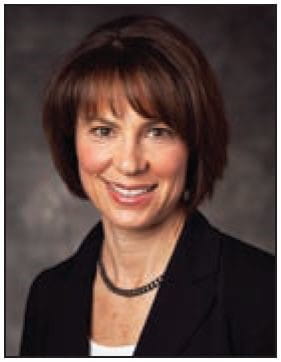A New Standard of Care?
December 28, 2017
 Donna Plecha, MD
Donna Plecha, MDAlthough widely accepted as beneficial for women in their 50s and beyond, screening mammography has remained controversial for women in their 40s, in part because of the lower incidence of breast cancer and the relatively high recall rate in this group. Now, however, a group of researchers from 13 institutions has identified the screening approach that is best for these women. In analyzing the results of 452,000 breast screening exams, they’ve shown that adding tomosynthesis to digital mammography makes the difference, benefitting women in their 40s more than any other group.
“What we’ve shown is that when tomosynthesis is added, patients in their 40s achieve the level of decreased callbacks and increased cancer detection similar to women in their 50s,” says Donna Plecha,MD Director, Breast Cancer Imaging, UH Seidman Cancer Center; Associate Professor of Radiology, Case Western Reserve University School of Medicine, one of the authors of the study. “If we’re willing to issue guidelines when we’ve reached these standards for women in their 50s, when we reach those standards for women in their 40s with tomosynthesis, then tomosynthesis is an acceptable way to screen patients.”
For the study, the researchers analyzed screening performance metrics at their institutions, including recall rate, cancer detection rate, positive predictive value for recall and positive predictive value for biopsy. The data included 278,908 screening exams using digital mammography alone, conducted over 12 months, and 173,414 exams using both digital mammography and tomosynthesis, conducted in the following 22 months.
Results show that the largest recall rate reduction with tomosynthesis was for women ages 40 to 49, decreasing from 137 to 115. At the same time, the invasive cancer detection rate for this age group increased with tomosynthesis, from 1.6 to 2.7. Both of these results achieved statistical significance.
“By minimizing the impact of overlapping breast structures, tomosynthesis improves upon mammographic performance, improving invasive cancer detection while concomitantly decreasing recall rate,” the researchers wrote in the journal Breast Cancer Research and Treatment.
“Furthermore, the additional cancers detected when tomosynthesis is added to digital mammography are almost exclusively invasive.”
Dr. Plecha says she’s proud of the role she and UH Seidman Cancer Center have played as early advocates and adopters of tomosynthesis. UH participated in the clinical trials that led to its approval by the U.S. Food and Drug Administration in 2011.
“After that, we were the first one to bring it clinically to the patients in Northeast Ohio,” she says. “We’ve been on the leading edge; we were part of the large multi-site trials that were published in JAMA. We were one of the earliest advocates for tomosynthesis, not just in Northeast Ohio but in the country.”
Dr. Plecha is next working on a trial addressing another thorny issue in breast cancer screening – how best to screen dense-breasted women.
“We’re part of a national trial out of ECOG/ACRIN looking at fast or abbreviated MRI for dense-breasted women,” she says. “That study just closed to accrual on Nov. 4, 2017, six months early because it was such a popular study to join across the nation. The studies that have been done in the past were retrospective, and this is a prospective trial. Because of all the studies that have come out, UH is going to be offering fast MRI for patients clinically as a self-pay option starting in January 2018. It’s intended for a person with dense breasts and no other risk factors or less than a 20 percent lifetime risk of breast cancer. This abbreviated MRI is about 10 minutes on the scanner.”
With these and other studies, Dr. Plecha expects recommendations to evolve.
“I think going forward in the next five to 10 years, we’re going to have more choices for screening and more individualized screening paths for women, depending on their risk and breast density,” she says. “For now, however, with what we know, the magnitude of performance gains in our study argue strongly for tomosynthesis screening for breast cancer detection as the standard of care for women beginning at the age of 40.”
For more information about this research, email Cancer.Innovations@UHhospitals.org.


